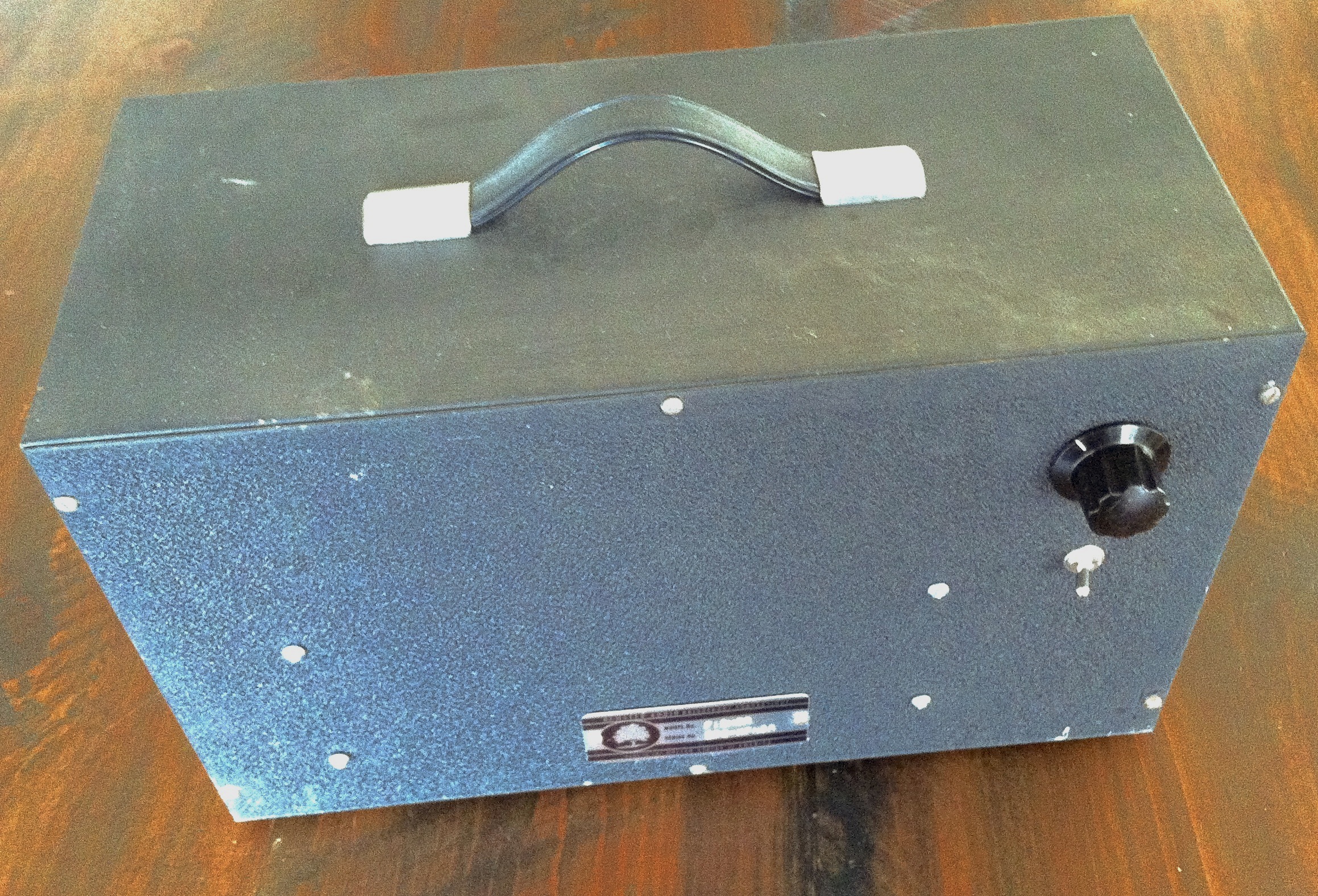 Let’s just say hypothetically that you had to write+ record a tremendous amount of guitar-based music very quickly. And even though you work at a recording studio filled with numerous custom and vintage-modified tube amps and great microphones, this music needed to be recorded in a modest home-studio using the not-awful but not-awesome Line 6 POD Pro XT. Could there be some device that might bridge this gap in audio aesthetics, if even a bit?
Let’s just say hypothetically that you had to write+ record a tremendous amount of guitar-based music very quickly. And even though you work at a recording studio filled with numerous custom and vintage-modified tube amps and great microphones, this music needed to be recorded in a modest home-studio using the not-awful but not-awesome Line 6 POD Pro XT. Could there be some device that might bridge this gap in audio aesthetics, if even a bit?
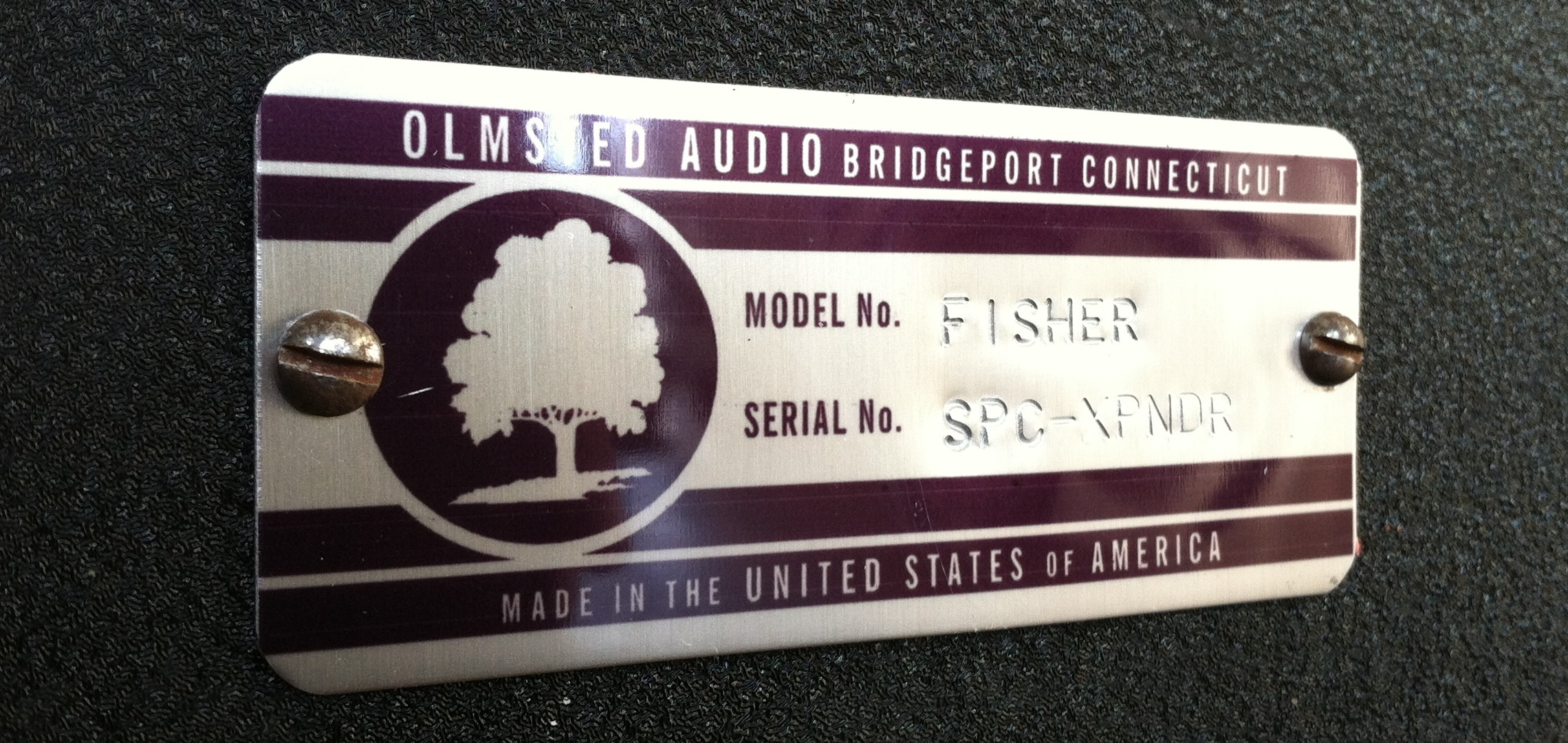 I’ve used the Line 6 ‘POD’ series of devices for a decade; they are not very good for recording prominently-featured electric guitar parts, but they definitely have their uses in the studio; the Bass Pod Pro has actually worked out well a few times, and the Pod Pro is often good to add grit to synths. When music must be recorded in a domestic environment, though, a POD can be very helpful, at least logistically. I recently bought the newer POD ‘PRO XT’ version for around $200 on eBay. Aside from an annoying but sonically inconsequential mechanical-hum given off by the power transformer it seems to work fine. It even has the ability to user-adjust the blend between close mics and far mics on the ‘Amps.’ Does it sound just like a good tube amp, well-mic’d, in a great sounding room? No. At best, it sounds rather like playback from a 16-bit ADAT, if any of y’all can remember that sound. Not bad, but not very detailed and overall sterile. I knew that some tubes, transformers, and real mechanical reverb could help transform the POD sound to something that I would be a little more comfortable with. So when I found a Fisher Space Expander for $10 at the flea market last fall, this little project went up near the top of the list.
I’ve used the Line 6 ‘POD’ series of devices for a decade; they are not very good for recording prominently-featured electric guitar parts, but they definitely have their uses in the studio; the Bass Pod Pro has actually worked out well a few times, and the Pod Pro is often good to add grit to synths. When music must be recorded in a domestic environment, though, a POD can be very helpful, at least logistically. I recently bought the newer POD ‘PRO XT’ version for around $200 on eBay. Aside from an annoying but sonically inconsequential mechanical-hum given off by the power transformer it seems to work fine. It even has the ability to user-adjust the blend between close mics and far mics on the ‘Amps.’ Does it sound just like a good tube amp, well-mic’d, in a great sounding room? No. At best, it sounds rather like playback from a 16-bit ADAT, if any of y’all can remember that sound. Not bad, but not very detailed and overall sterile. I knew that some tubes, transformers, and real mechanical reverb could help transform the POD sound to something that I would be a little more comfortable with. So when I found a Fisher Space Expander for $10 at the flea market last fall, this little project went up near the top of the list.
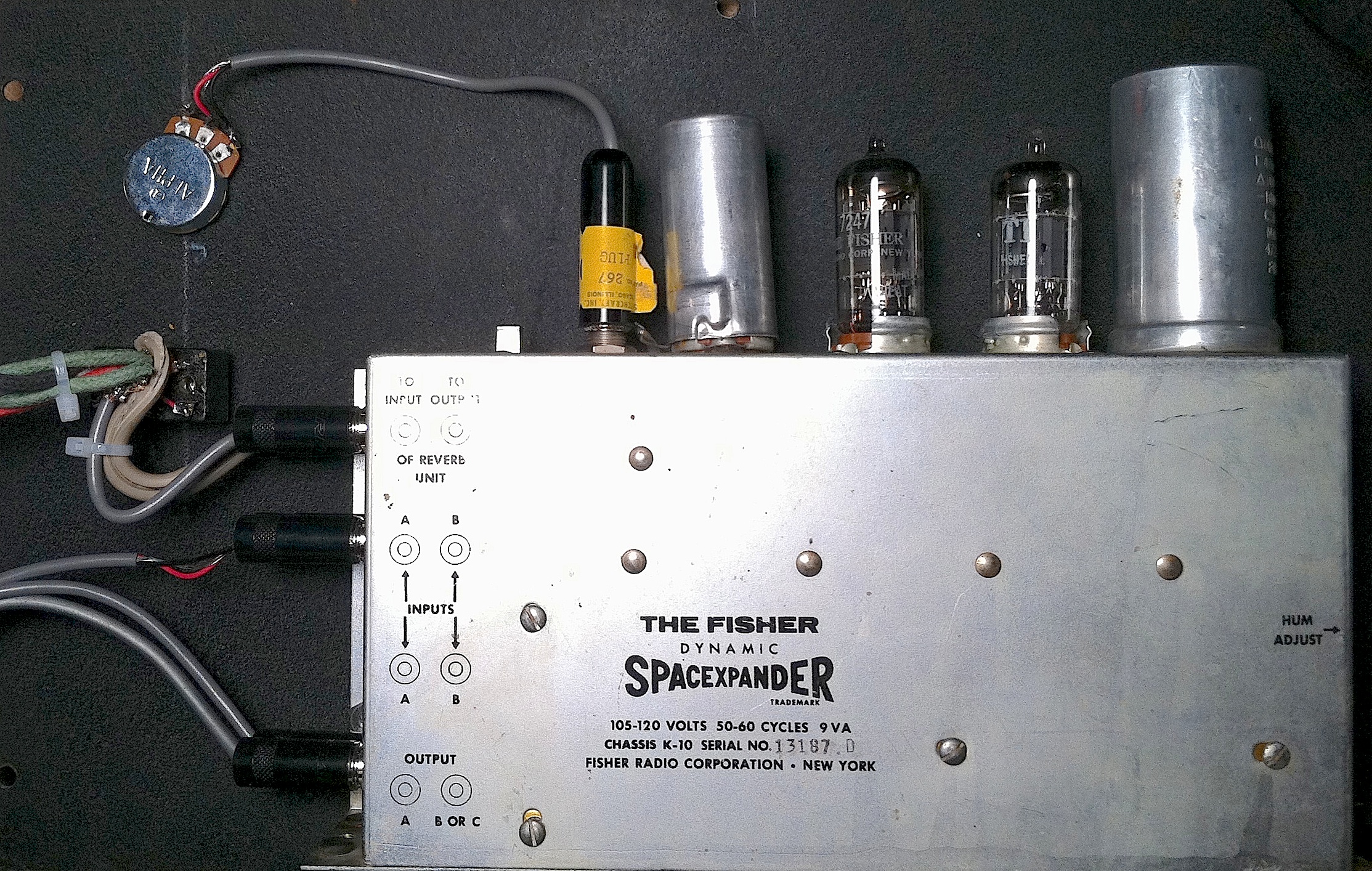 The Fisher is an old home HiFi reverb system with unbalanced -10 input and outputs; I need +4 balanced. But I did not want to modify the Fisher unit in anyway (other than adding a grounded AC lead), since they are highly sought-after and i might want to sell it someday. So i rigged it up inside this old salvaged DIY ham-receiver case with one of those MCM electronics balancing amps, and two inexpensive Jensen MOD series 9″ reverb chambers with medium-impedance inputs (around 300 ohms, I believe). One tank is short decay, the other is long decay. I realize that the 17″ larger tanks do sound better, but since this box was destined for my tiny home-studio, size is a real issue; I needed everything to fit inside the 14×8″ steel box. I’ve already enjoyed the benefits of being able to select two different tanks; on tracks that feature two electric guitar parts I am easily able to situate each in its own ‘space.’
The Fisher is an old home HiFi reverb system with unbalanced -10 input and outputs; I need +4 balanced. But I did not want to modify the Fisher unit in anyway (other than adding a grounded AC lead), since they are highly sought-after and i might want to sell it someday. So i rigged it up inside this old salvaged DIY ham-receiver case with one of those MCM electronics balancing amps, and two inexpensive Jensen MOD series 9″ reverb chambers with medium-impedance inputs (around 300 ohms, I believe). One tank is short decay, the other is long decay. I realize that the 17″ larger tanks do sound better, but since this box was destined for my tiny home-studio, size is a real issue; I needed everything to fit inside the 14×8″ steel box. I’ve already enjoyed the benefits of being able to select two different tanks; on tracks that feature two electric guitar parts I am easily able to situate each in its own ‘space.’
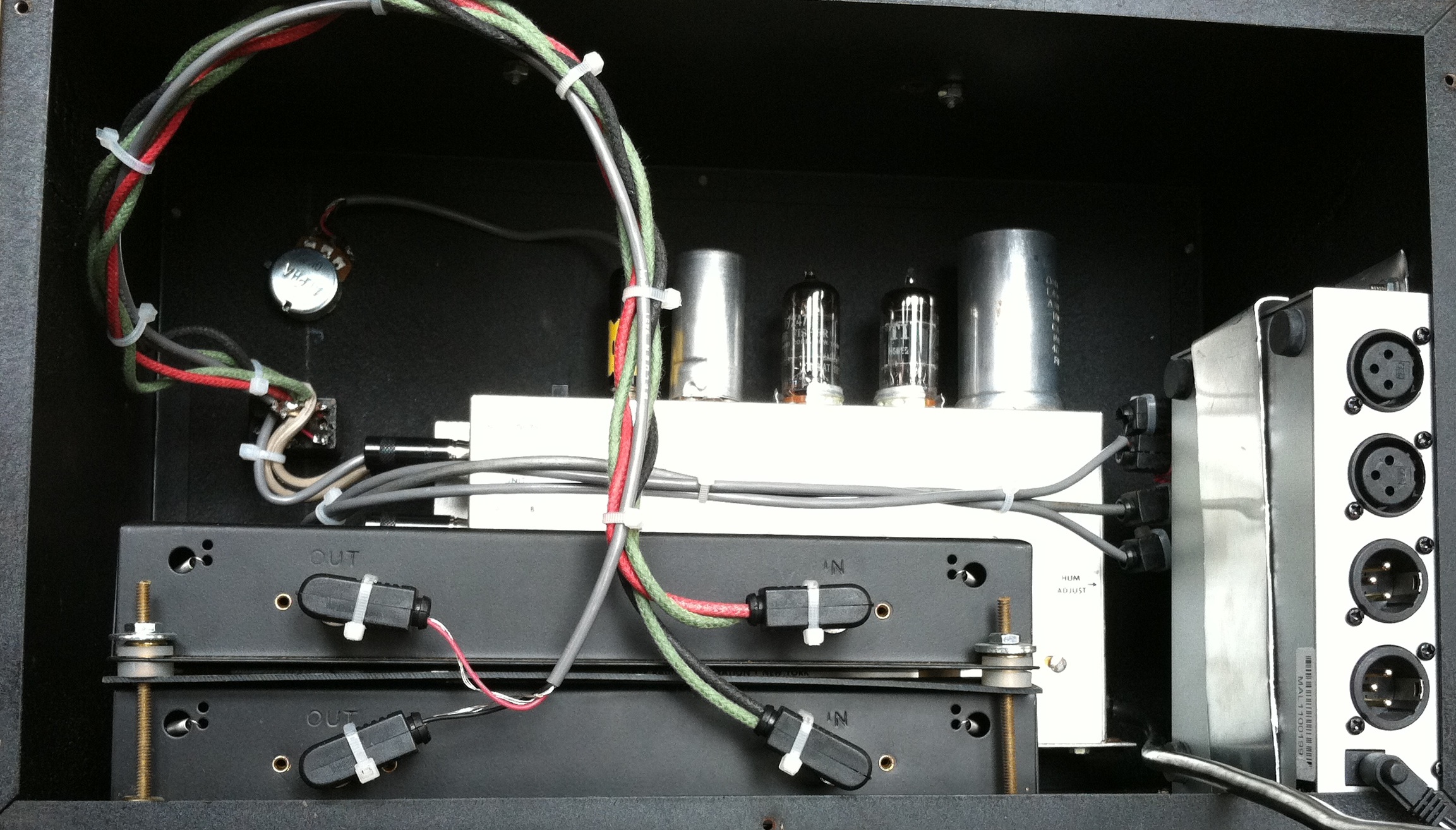 Here’s a rear-view of the whole fandango. Balancing amp is on the right; note that it is stereo, and the unit is fully wired for stereo; that being said, the fisher only generates a mono reverb signal which is then blended into the stereo direct output path; since I am using the unit for mono guitar tracks, I just use one pair of the XLRs at the moment.
Here’s a rear-view of the whole fandango. Balancing amp is on the right; note that it is stereo, and the unit is fully wired for stereo; that being said, the fisher only generates a mono reverb signal which is then blended into the stereo direct output path; since I am using the unit for mono guitar tracks, I just use one pair of the XLRs at the moment.
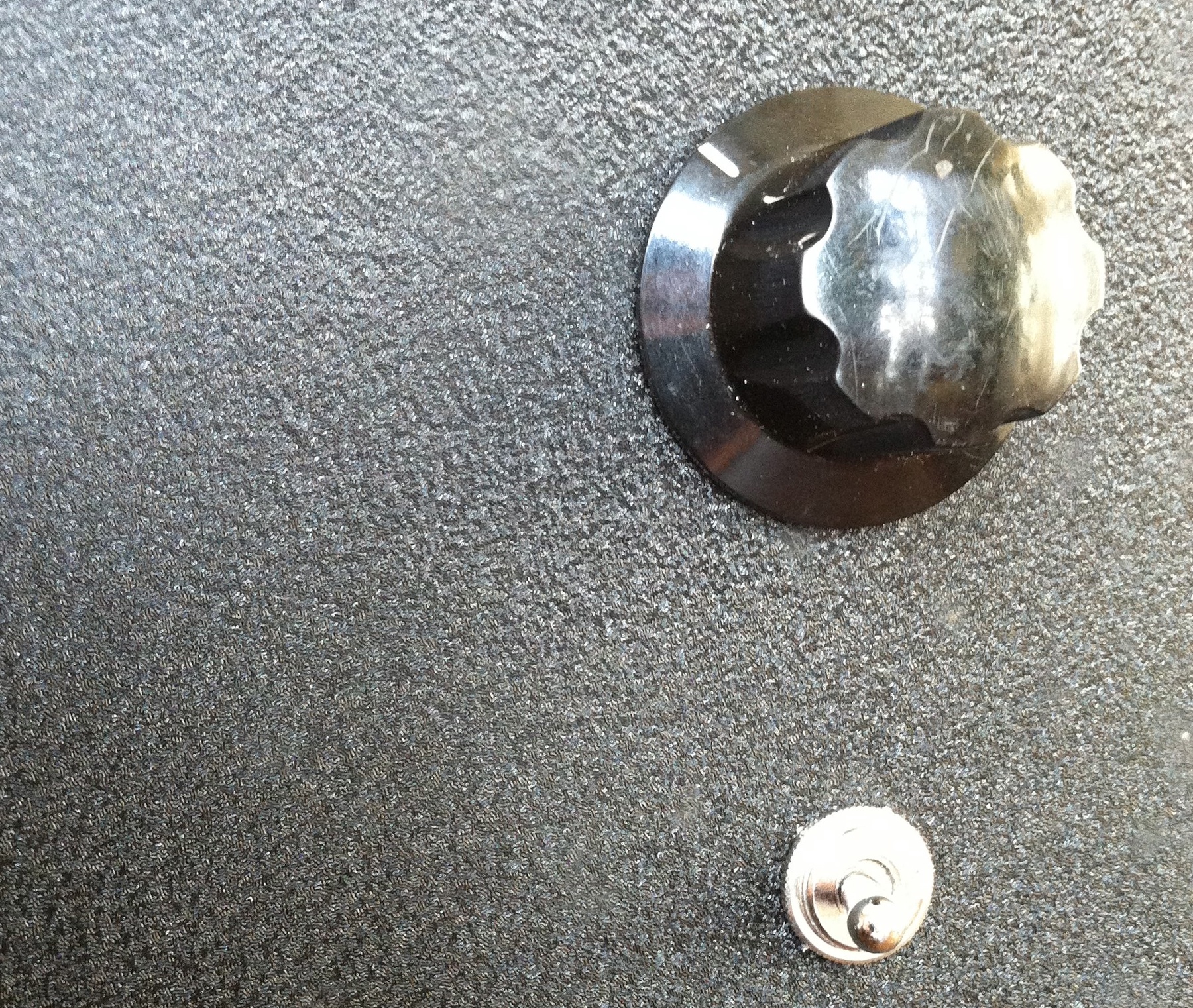 At left: the ‘blend’ knob, and below that a DPDT on/on switch that selects one tank versus the other.
At left: the ‘blend’ knob, and below that a DPDT on/on switch that selects one tank versus the other.
Someone very helpfully scanned and uploaded the manual and schematic for this device; click here to download the PDF directly from them. There are not too many surprises in the schematic, other than that the first reverb recovery stage has a 330k plate-load resistor; this is the highest value that I have ever seen, and it failed almost immediately. Twice. I eventually put a 2-watt CC in place of the original 1/2 watt, and changed the adjacent coupling cap as well. I had to replace pretty much all the B+ resistors in the unit (and several coupling and bypass caps) in order to get rid of some nasty intermittent noises; now the unit is working fine and it sounds really good! A word of advice if you get one of these things: run the input hot, and back off on the return level. It takes A LOT of signal before it distorts or smacks the tank, and you will be rewarded with a much-improved signal-to-noise ratio. The MCM balancing amp has handy gain-trims that make it easy to achieve overall unity gain on the direct signal while accomplishing this goal.
Click here for some previous tube-reverb system action on PS dot com
4 replies on “The Black Box”
I’v e seen a lot of ham receiver projects and never one in a case like that. Do you have pictures of what was in there?
Be aware that manufactured National and Hammarlund variable caps, and National and Eddystone dials can be worth considerable money. As can a lot of other pieces found in these.
I’ve seen a lot of ham receiver projects and never one in a case like that. Do you have pictures of what was in there?
Be aware that manufactured National and Hammarlund variable caps, and National and Eddystone dials can be worth considerable money. As can a lot of other pieces found in these.
no, i don’t… the unit was incomplete, IIRC… dude DID have an entire Toshiba scannng electron microscope in his basement, and about 10 miles of nice silver-plated 24ga wire…
Awesome as always .. love it.